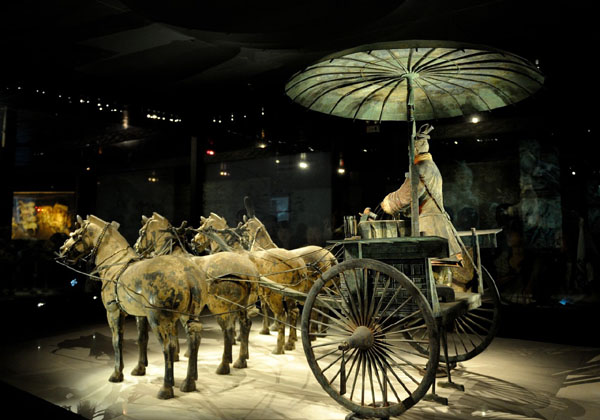 |
|
Photo shows the bronze chariots and horses from Qin's Mausoleum of Qin Dynasty (221-206 BC). [File photo] |
The project was launched by the institute in August of 2013, and the process of appraisal and selection took one and a half year.
Based on extensive research and investigation, the institute chose 85 items of important scientific and technological inventions of ancient China, which falls into three categories: scientific discoveries and creations, technological inventions, and engineering achievements.
For example, the theory of channels and collaterals (Chinese: 经脉学说) of the Han Dynasty (206 BC - AD 220) is listed in the catalogue of scientific discoveries and creations; the four ancient Chinese inventions — papermaking, printing, the compass and gunpowder, and the Seismoscope invented by the Chinese scientist Zhang Heng of Han Dynasty in the catalogue of technological inventions; bronze chariots and horses from Qin's Mausoleum of Qin Dynasty (221-206 BC), Chime of Zenghouyi and Dujiangyan Irrigation System in the period of Warring States Period (475-221 BC) in the catalogue of engering achievements.
"Of course, the inventions of Chinese people are not limited to these 85 items. In the course of selection, we emphasis on their originality and their influences on science and technology advancement, as well as their impact on the civilization's progress," said Zhang Baichun, a research fellow of the institute.
According to the research panel, the period for ancient scientific and technological creation is not equally distributed in Chinese history. The flourishing Tang Dynasty (AD 618-907) did not excel in those innovations, but instead many great inventions emerged in the declining Song Dynasty (960-1279).
"After the collapse of the Yuan dynasty, not many great inventions appeared in the more than 500 years of Ming and Qing dynasties. Such results are worthy of serious consideration and also an important research subject for us in the future," said Zhang.